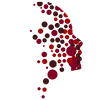After a diagnosis of Irritable Larynx Syndrome (ILS) is made, you will typically be prescribed a protocol that includes the following components, as applicable.
Reflux Management
Although there can be various contributing causes to the ILS diagnosis, if you have been diagnosed with a irritable larynx, you will be placed on a reflux management protocol in addition to other measures that may be prescribed to assist in resolving your condition. In many cases, reflux may be a very large component to your chronic cough and controlling your reflux will be critical in controlling your cough. Even if reflux is not believed to be significantly contributing to your cough, you will still be placed on a reflux management protocol. It is important to follow these guidelines to minimize the potential for even occasional reflux further damaging the already irritated larynx during this recovery process. See Reflux Diet.
Allergy Control
The drainage associated with an allergic response can impact the overall sensitivity of the larynx. If this is suspected to be a contributing factor, you will likely be provided with allergy control medications or referred to an allergist if more significant intervention appears necessary to manage allergy symptoms.
Vocal hygiene
Because the vocal cords are a very sensitive portion of the larynx, capable of triggering a reflexive cough, taking good care of the vocal cords ensures they are not injured or traumatized in a way that may contribute to prolonging the heightened sensitivity that is causing the coughing. See Vocal Hygiene.
Some occupations require heavy voice use, even loud voicing at times. The SLP staff can work with you to find solutions to allow you to continue working, while also reducing the demands on your voice during this period of recovery.
Coughing cessation protocol
Coughing can be a self-perpetuating cycle! Because coughing itself can be extremely traumatizing to the vocal cords, thus contributing to inflammation and irritation, it is important to eliminate as much as the coughing behavior as possible. Obviously, in the case of a irritable larynx, there will be increased instance of reflexive coughing, but many throat clearing behaviors may be volitionally controlled and managed with techniques. The lesser the coughing behavior, the lesser the trauma to the larynx. With less trauma/injury, should also follow less irritation, allowing for more normal reflexive cough thresholds. The larynx becomes less irritated!
The key to success here is recognizing all the coughing behavior you actually do. Many patients are unaware of exactly how much coughing and throat clearing they do, especially when they have been coughing so much, for so long. The SLP staff will assist in helping you to identify these behaviors. Learning to pay attention in this regard will be critical to your overall success in overcoming the cough.
The Cough Cessation Protocol details techniques to assist with minimizing the coughing behavior as much as possible. The first two weeks will be the most difficult as the larynx is highly irritable. By doing your very best to follow the guidelines set forth in the protocol, you will help speed the resolution of your chronic cough. See Cough Cessation Protocol.
Medications
In some cases, medications can be used to help reduce the sensitivity of the nerves in the larynx. These medications are the same used to treat peripheral neuropathies. As such, if it is felt that you may benefit from the use of one of these medicines, you will likely be referred to a neurologist for this purpose. It is important to understand that any medication will be a component of your overall management plan. Medicines will NOT replace the cough management plan provided to you by this practice. It is through the combined use of the medications as well as plan protocols that you will experience the best resolution of your chronic cough.
In many instances, these medications are not warranted although any questions you may have in this regard you should address with your doctor. These medications are typically only considered when adequate response to the cough management plan has not been achieved.

